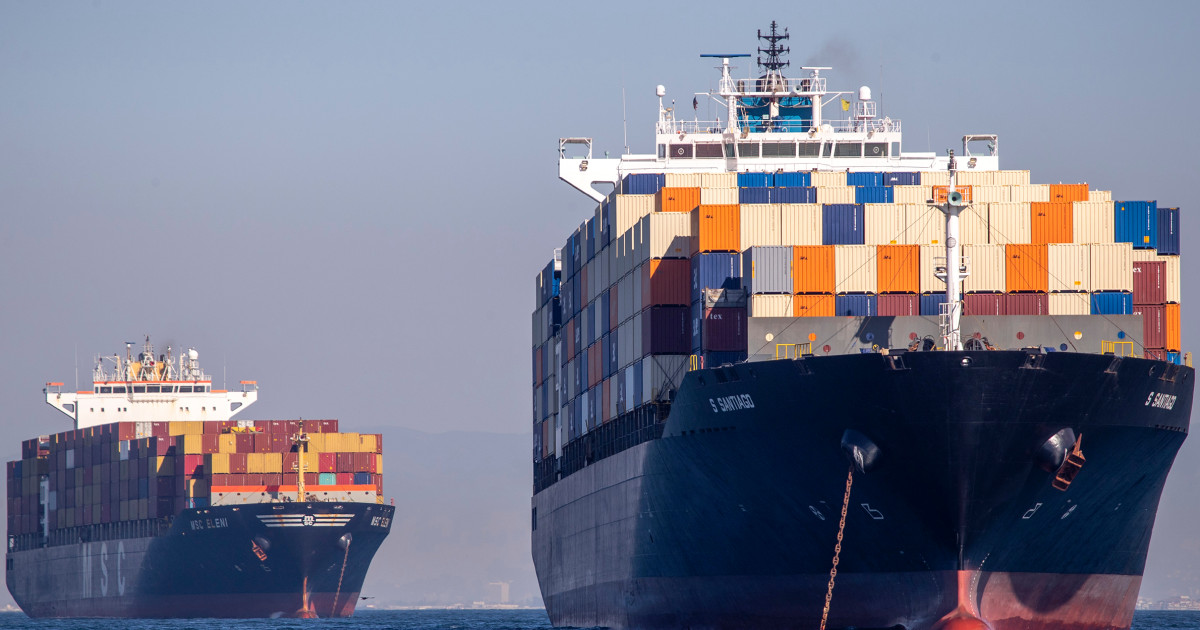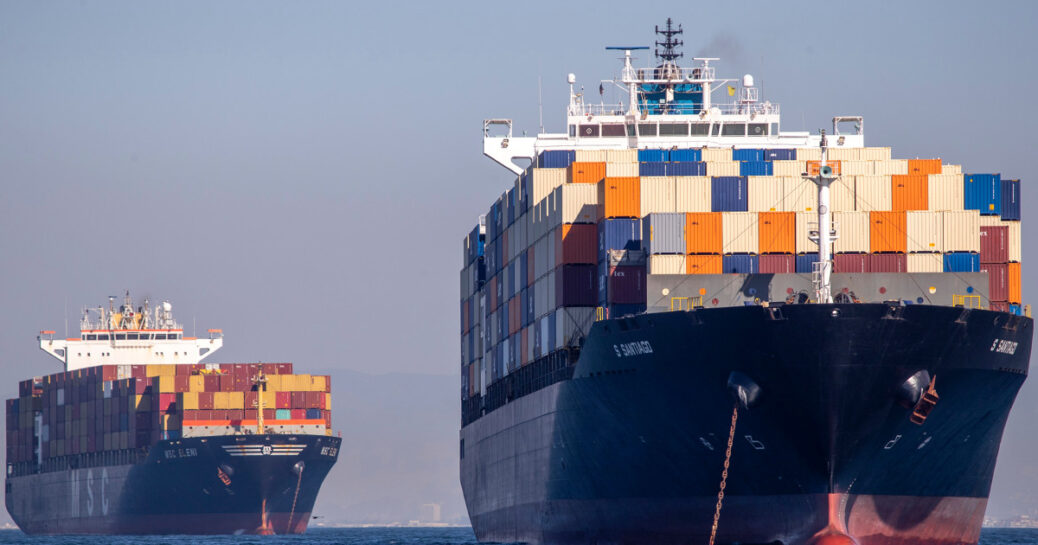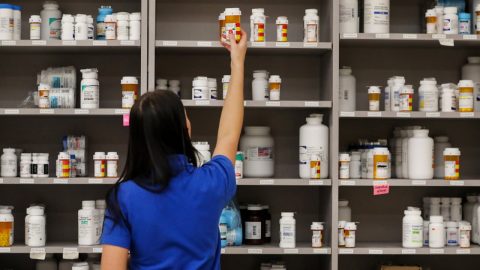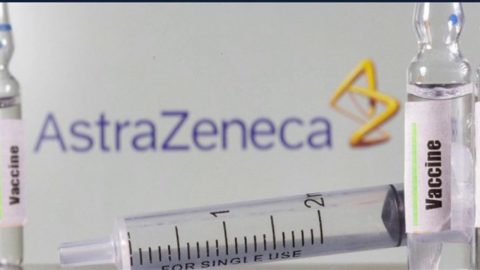
“You can’t look out on the water in any direction without seeing ships of different sizes from all over the world,” said John Kindred, a long-time resident of Long Beach, California. “It’s like watching an invasion before it starts, only they’re not war ships and they’re not attacking. But that’s how many and how spread out they are.”
Kindred, co-founder of the Long Beach Environmental Alliance community organization, drove trucks into and out of the ports of Los Angeles and Long Beach for nearly two decades. In that time, he said he never saw anything like the massive buildup of ships currently idling just offshore.
Together, the ports of Los Angeles and Long Beach are responsible for about 40 percent of the country’s imports. Now, cargo ships are being forced to wait offshore for an average of 10 days as increased consumer spending, labor shortages, and other issues brought on or worsened by the Covid-19 pandemic continue to impact supply chains and cause slowdowns.
While they wait en masse, unable to enter port and offload their containers, they idle, emitting pollutants in close proximity to the people living in these areas.
In one particular zip code near the California ports, the risk of cancer from air toxics is higher than in 99 percent of the surrounding region.
The danger of particulates emitted by diesel engines is well documented, according to Suzanne Paulson, a professor in the Department of Atmospheric and Oceanic Sciences at the University of California, Los Angeles; and the director of the university’s Center for Clean Air. The particulate matter can cause cardiovascular issues like heart attacks and strokes as well as negatively impact birth and developmental outcomes, leading to low birth weight, premature births and lower lung function in children.
“We know that more particles make people more sick,” Paulson said. “Diesel engines produce a lot of particulate and these diesel particles make people more sick than some other types of particles.”
Enesta Jones, senior press officer for the Environmental Protection Agency, confirmed in a statement to NBC News that “the high concentration of diesel engines at ports can contribute to local air quality challenges.” The agency said it continues to work “to reduce diesel pollution from these important centers of commerce.”
In one of the zip codes near the California ports, 90802, the risk of cancer is 714 per million, according to the Multiple Air Toxics Exposure Study from the South Coast Air Quality Management District, or SCAQMD. The air toxics cancer risk is higher than 99 percent of the SCAQMD population, and diesel particulate matter made up 67.4 percent of the pollutants contributing to cancer risk in that area.
The study also looked at the broader South Coast Air Basin population and found that cancer risk due to toxic air contaminants was 28 percent higher in disadvantaged communities.
“The area closer to the ports is predominantly lower income, people of color; there’s a large Latino population,” said Chris Chavez, deputy policy director for the Coalition for Clean Air. “It’s a frontline community and is one of the most polluted areas in the state. Constant exposure to pollution is something they live with day in and day out.”
As supply chain issues and the backlog continue, emissions are expected to worsen.
The California Air Resources Board, or ARB, released a report in September showing emission levels in March 2021 when the ports saw a 50 percent increase in activity from 2019, before the pandemic. That heightened activity led to an increase of 0.27 tons per day of particulate matter being emitted, which is comparable to exhaust emissions from nearly 50,000 Class 8 diesel trucks every day.
In mid-March, there were about 25 carrier ships idling near the ports. On Wednesday, there were 103 container ships, according to a tweet from the Marine Exchange of Southern California, which monitors ship activities for the ports. Of these, 74 were at anchor or idling and 29 were docked in a berth at port.
On average, these ships are now waiting for around 10 days, according to Mario Cordero, executive director for the Port of Long Beach. Before the pandemic, there would be one ship on average waiting to unload.
“Of course the issue of ships not being able to get into port will have an impact on emissions,” said Namrata Nadkarni, media and communications officer for the United Nations’ International Maritime Organization, or IMO. “This ship has to have engines running to provide lighting, etc., and to maintain the ship’s place at anchorage despite ocean currents.”
Ships must comply with certain emissions standards set by the IMO regardless of where they are in the world. However, when ships are anchored offshore, they use their auxiliary engines to power and maintain basic operations, which has “substantial implications for portside communities,” according to the ARB. Normally, these ships wouldn’t anchor at all and would instead dock in a berth where they could plug into shoreside power, thereby reducing their levels of pollution dramatically. At the moment, there aren’t enough berths available to accommodate the number of waiting ships.
While advances toward cleaner shipping are being made, there’s still a long way to go. About 90 percent of global trade is transported by sea, and global shipping is responsible for nearly 3 percent of the world’s CO2 emissions. Without additional interventions, the global shipping industry is currently on track to emit around 20 percent more greenhouse gases by 2050 compared to today, according to new research backed by industry leaders.
The ports of Los Angeles and Long Beach have taken several steps to lessen the current backlog, including extending their hours of operation and, on Monday, announcing new fees for unloaded containers that sit for too long. Starting Nov. 1, ocean carriers will have nine days to move containers transported by trucks, and three days to move containers transported by rail. Violations will result in fines of $100 per container per day.
The idea behind the fees is that they incentivize carriers to clear their containers faster, make room for others to unload and reduce the backlog of ships anchored offshore. Clearing the backlog is key, but any solution will also likely result in increased emissions at least temporarily since it will require increased rail and truck traffic.
There’s no easy solution, said Chavez of the Coalition for Clean Air.
“Ultimately, the entire logistics system is impacted right now, so it’s going to be difficult to work down this backlog when you have backlogs at the warehouses, the distribution centers, all the way to China,” Chavez said. “We need to figure out how to also reduce the environmental impact of clearing that backlog. We can’t forget that when we’re talking about air pollution and air quality, this comes down to people’s longevity.”










Recent Comments